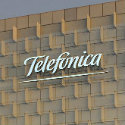Telefónica Warms to ONAP, Sees Merger With OSM as 'Possibility'
Spanish operator says it is working on aligning OSM efforts with those of ONAP and acknowledges the latter has a broader remit.

Telefónica has indicated that it could join the ONAP initiative as it works on automating and virtualizing its networks and IT systems, acknowledging that its own Open Source MANO (OSM) project is more limited in scope.
Often seen as rival efforts, ONAP and OSM have emerged as the two main industry initiatives targeting the complex issue of management and network orchestration.
Formed from the merger of AT&T's ECOMP platform with another scheme called the Open Orchestrator Project (OPEN-O), ONAP is now managed by the Linux Foundation and has been rapidly signing up service provider members in recent months. (See Comcast Joins ONAP, AT&T Confidence Builds on ONAP Adoption and Big Names Board the ONAP Express.)
Standards body ETSI oversees the OSM project, whose members now include Telefónica, the UK's BT Group plc (NYSE: BT; London: BTA), Norway's Telenor Group (Nasdaq: TELN) and Sprint Corp. (NYSE: S) in the US.
A Telefónica decision to join ONAP would raise questions about the outlook for OSM, which has recently appeared to lack ONAP's momentum. But the Spanish operator seems eager to quash the perception of ONAP and OSM as rival activities.
"OSM cannot be compared with ONAP because the scope of ONAP is bigger and OSM is only a small part of the Telefónica transformation project," says Javier Gavilan, Telefónica's planning and technology director. "We are transforming our full stack and this is something we are doing and it could be a part of ONAP."
The remarks come after US telco giant Verizon Communications Inc. (NYSE: VZ) revealed in April that it is considering joining either ONAP or OSM and that it similarly believes ONAP has a broader remit.
OSM is mainly an orchestrator at the virtual network function level, while ONAP is a "comprehensive service management platform," said Srinavasa Kalapala, Verizon's vice president of global technology and supplier strategy, in a discussion with Light Reading. (See Verizon Weighing Open MANO Options.)
Telefónica's Gavilan says he has recently been in contact with AT&T about aligning ONAP's efforts with OSM's in developing common information models and processes.
Asked if this could ultimately lead to a merger between ONAP and OSM, Gavilan says: "That is something that could happen but the key is to focus on things that are common for both initiatives. The industry has two different initiatives running in parallel with a lot of common points and the idea is to align them as much as possible."
For more NFV-related coverage and insights, check out our dedicated NFV content channel here on Light Reading.
Gavilan emphasizes that a merger between the two groups is not currently an objective for OSM. "If it happens in the future, it will happen, but it is not an objective for Telefónica or OSM members," he says.
Telefónica faces a number of service orchestration challenges on its UNICA virtualization project and hopes that OSM will be able to address these, Gavilan tells Light Reading. (See Telefónica CTO: It's Time for Unica Phase II.)
"The integration of OSM and UNICA is not solved," he says. "A couple of months ago we had the first [OSM] release that was product-ready and we have launched an RFI [request for information] just to understand what are the different proposals for integrating OSM with OpenStack architecture."
In a recent white paper, market research company Analysys Mason said that Telefónica has faced "notable problems with OpenStack implementations" and the fact that "cloud technologies do not support the specific performance and distribution requirements of network functions.
"It should continue to exert pressure on UNICA vendors to live up to their promises and collaborate with one another, and be prepared to bypass them if necessary and build new capabilities itself (as it is doing with OSM) to ensure it can realize its vision," said the report authors.
An open source platform, OpenStack is regarded as one of the key technologies underpinning virtualization and is being sourced from several suppliers as part of Telefónica's UNICA project.
— Iain Morris, 

 , News Editor, Light Reading
, News Editor, Light Reading
Read more about:
EuropeAbout the Author(s)
You May Also Like












